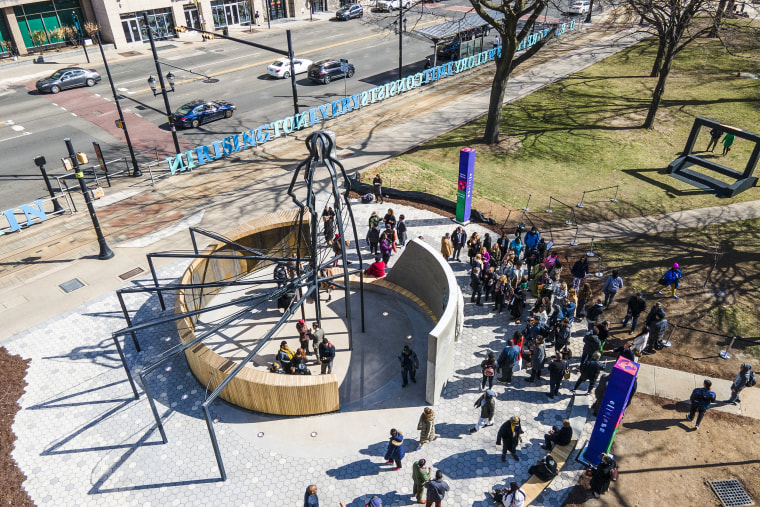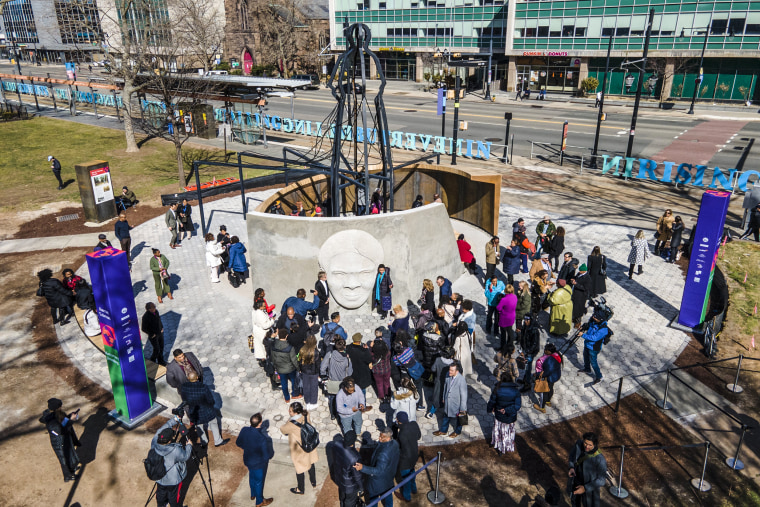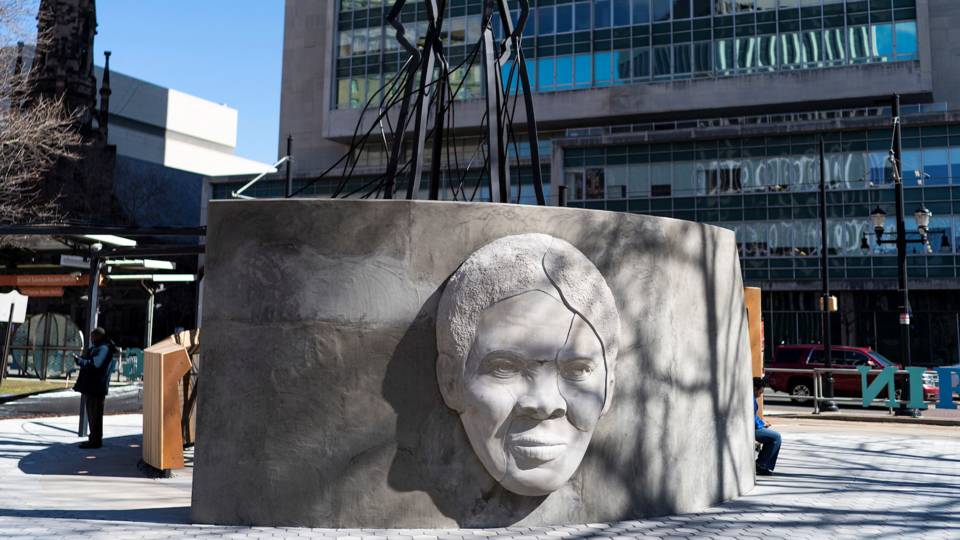By Claretta Bellamy
A monument to African American pioneer Harriet Tubman was unveiled in Newark, New Jersey, on Thursday, taking over a space where a statue of Christopher Columbus stood until the summer of 2020.
During the ceremony in what is now downtown Newark’s Harriet Tubman Square (formerly Washington Park), Mayor Ras J. Baraka explained Newark’s connection with Tubman, who helped “shepherd folks out of slavery into freedom,” he said. The city, which is now 48% Black and 37% Latino, according to the U.S. Census, was a known stop along the Underground Railroad, which was a network of routes escaped slaves followed to find freedom in states that had abolished slavery.
“Very little is known about the history of abolition in the city of Newark in New Jersey, and this gives us a chance to tell that story,” Baraka told NBC News.
Titled “Shadow of a Face,” the 25-foot-tall monument is made up of steel that extends into a trellis visitors can walk under. Timelines of Tubman’s life and Newark’s abolitionist history are displayed on a circular wall, as an audio narration by Newark native Queen Latifah plays overhead. The monument’s title was inspired by writer Robert Hayden’s poem “Runagate Runagate,” which describes runaway slaves searching for freedom through the Underground Railroad.
Nina Cooke John, the architect who designed the monument, said that it is meant to evoke feelings of awe, curiosity and a sense of connection.

“I really want them to feel like they feel seen,” said Cooke John, who is 50 and lives in Montclair, New Jersey. “That they see themselves in this monument. That they feel represented. That they feel connected. That they feel like they belong in this space.”
Founder of Studio Cooke John Architecture and Design, her projects include a master plan for the New York Botanical Gardens and a 3D holiday installation, “Point of Action,” that was on view at the Flatiron Public Plaza, in New York City, from November 2020 to January 2021. Cooke John, whose architectural career spans more than 20 years, said she first applied to an open call for artists interested in the Newark site in December 2020. The city’s Division of Arts and Cultural Affairs chose Cooke John’s design in June 2021.
The Christopher Columbus statue the new monument is replacing was removed by the city in June 2020, following nationwide racial justice protests during which more than 130 Confederate and other historic statues were removed across three dozen states. Baraka said the city took down the Columbus statue “to avoid the potential danger of people taking it upon themselves to topple it,” according to a June 2020 tweet.
Baraka said city officials thought Tubman was a suitable replacement because she was a woman “who fought for democracy and freedom.”
He said replacing the statue is “by no means” a way of telling people that they shouldn’t celebrate Columbus. “We’re just asking that you not make us celebrate him as well,” he said.

“We have a right to be able to tell our own story, and this monument is our story,” Baraka added.
Newark residents also participated by buying bricks placed on the monument’s wall, which shared their own personal stories and how they resonate with the history of Newark.
Baraka called the statue “an incredibly beautiful sight” and said he’s excited that the statue is in the city. He also said the statue has great significance to the city of Newark — at a time when other places around the country are “trying to find ways to limit” Black visibility and representation in history, literature and books.
Several cities have honored Tubman with monuments in recent years, including the CIA headquarters in Langley, Virginia, which unveiled a bronze statue of Tubman in September 2022, along with a 13-foot bronze statue named “Beacon of Hope” at the Dorchester County Courthouse in Cambridge, Maryland — just a few miles away from Tubman’s birthplace.
Born Araminta Ross around 1822, Tubman escaped enslavement at age 27. After marrying John Tubman, a free Black man, around 1844, she changed her first name to Harriet and took his last name. Tubman was nicknamed “Moses” for risking her life to escape bondage through the Underground Railroad, and later making 13 trips into Maryland and rescuing at least 70 relatives and friends.

Tubman inspired many with her bravery, including a Philadelphia man who last year completed a 400-mile trek he coined “Walk to Freedom,” in which he followed the same routes Tubman did along the Underground Railroad. Also, the movie “Harriet” was released in 2019, depicting Tubman’s life and journey to freedom.
Cooke John said the new monument in downtown Newark embodies courage, which is an important message she as a Black woman conveys to her daughters.
“I talk about courage, being afraid but doing it anyway,” Cooke John said. “That’s really what courage means.” Gaining inspiration from these stories, she added, is “really important for young girls and young Black girls, especially.”

